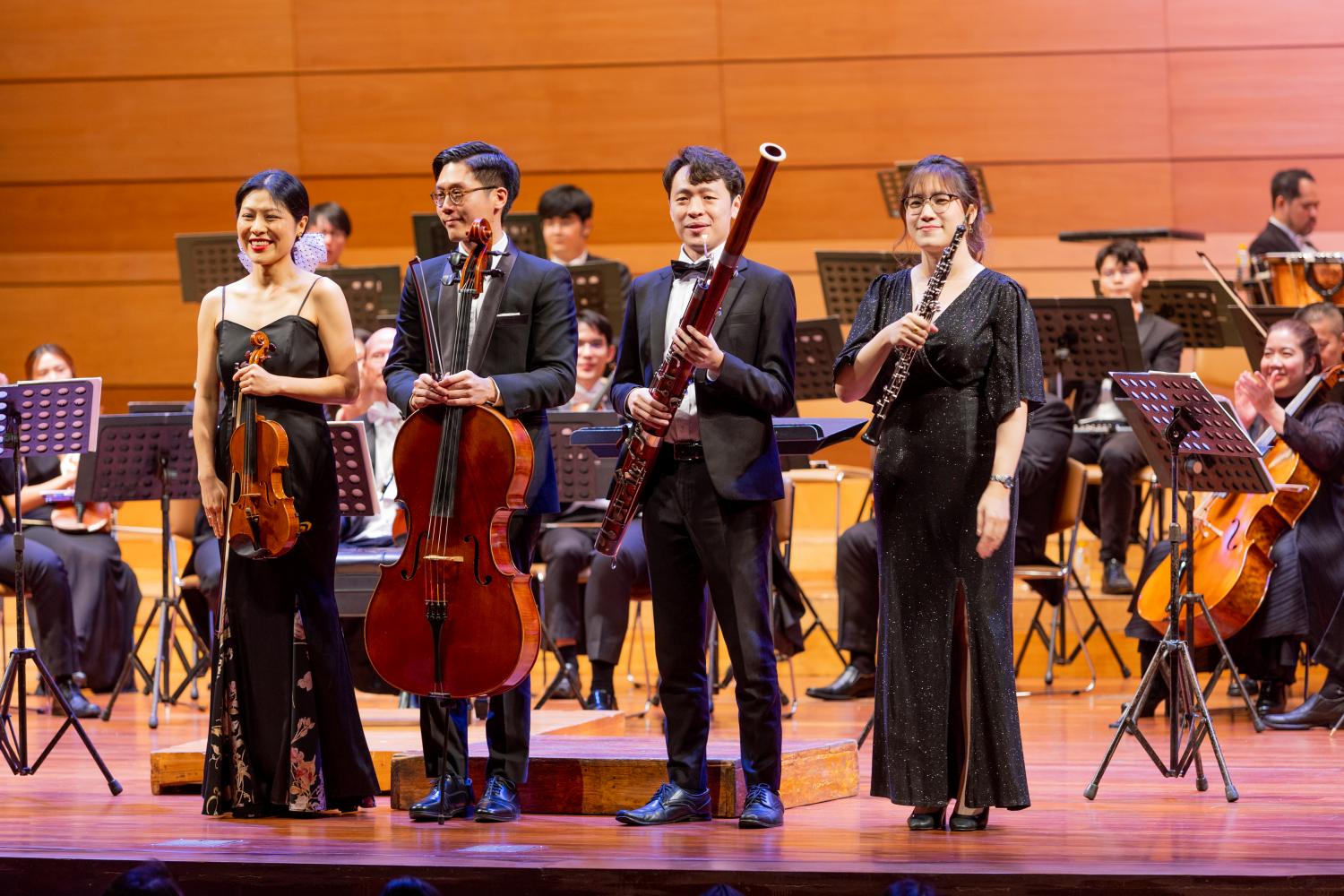As if a continuation of the joy and exuberance of recent Songkran festivities, the Royal Bangkok Symphony Orchestra's latest concert at the Thailand Cultural Centre on April 21 was a singularly lighthearted and delightful affair, full of playful energy and vivacity.
Presented in collaboration with the Tourism Authority of Thailand and B. Grimm, the evening's title "An Italian Journey" referred specifically only to Mendelssohn's popular Symphony No.4 In A Major in the second half of the concert -- the Italian.
However, the Donna Diana overture by brilliant Viennese composer Emil Nikolaus von Reznicek and Haydn's elegant Sinfonia Concertante In B-flat Major are works imbued with an equally celebratory character. Therefore, although the "air" that the first half of this concert breathed was somewhat removed from the Mediterranean geographically, the commonality of genial expression throughout the programme had a unifying sense of joire de vivre which seemed most cohesive.
Resident conductor Vanich Potavanich was once again directing proceedings with great authority on the podium. The explosive opening of the Donna Diana overture is the wittiest of musical false starts, both rhythmically and tonally. It takes a few bars of apparently random entries before the music settles on a clear sense of beat for the jovial first theme. The first violins have an exposed semiquaver run-up to set the melos smoothly into motion, which benefitted here from a crisp and clear entry, leading confidently into the main body of the overture which was by turns boisterously chromatic and then full of the sweetest lyrical Viennese charm. The impressive string section sounded gloriously rich and slick in the latter mode.
A much quieter middle section presented a big challenge for an instantly exposed viola section, with extremely awkward moto perpetuo string crossings -- moreover compounded by intricately changing patterns -- involved whilst needing to keep in tight ensemble with subtly phrased woodwind entries. The ensemble transmitted reasonably well in the event, and with the return of the main theme this wonderfully whimsical concert overture worked its magic towards a satisfyingly loud, rumbustious tutti conclusion.
Four principal members of the RBSO were then showcased in Haydn's delightful Sinfonia Concertante -- concertmaster Bing Han; cellist Panyaphat Wongwechwiwat; oboist Nuttha Kuankajorn; and principal bassoonist Thanawat Ngosawang.
Composed during his first extended London visit of 1792 for the local impresario/violinist Johann Peter Salomon, the outer two allegro movements are gloriously effervescent, with all four solo instrumentalists assigned numerous bravura passages whilst also functioning together as a perfectly balanced chamber group. Bing Han delivered her entries with an admirable poise, a keen sense of Classical period style, and a most attractively clean, singing tone. With the cello facing outwards to the audience to achieve equal projection, Panyaphat likewise moulded his part with due care and attention to detail, always an imperative in Haydn's world of clockwork-like precision and clarity.

Bing Han, Panyaphat Wongwechwiwat, Thanawat Ngosawang and Nuttha Kuankajorn.
The combination of two string and two woodwind instruments certainly makes for a lovely roundness of combined timbre in this piece, with Nuttha and Thanawat also playing their parts to perfection, every single note crystal clear and all phrases given a controlled sense of direction and structural balance. Haydn's extended and written-out four-part cadenza in the 1st movement was quite simply a marvel to behold, flawless in its execution, intonation, and timing -- a model demonstration of fine chamber-music making at the TCC. Meanwhile, the delicate central andante was suitably airy and affecting, whilst the bubbly finale allegro con spirito once again conveyed the very essence of Haydn the good-natured, humorous, witty genius.
For a well-deserved encore these four RBSO star musicians then entertained with an extremely clever arrangement of a popular contemporary tune from the Japanese world of Anime -- Howl's Moving Castle. All in all a triumphant exposé of the assured levels of professionalism and technical excellence that can be observed consistently today throughout the ranks of the RBSO -- "Bravo one and all!"
Felix Mendelssohn expressed an unbounded optimistic vitality in his playful Italian symphony -- an inspired masterpiece which resulted from his European tours of 1829-1831. Reacting to the colour and atmosphere of the Mediterranean, he wrote to his father: "And now has begun what I have always thought to be the supreme joy in life!" To his dear sister Fanny he further exclaimed: "The Italian symphony is making great progress. It will be the jolliest piece I have ever done…"
In this highly energised performance by Vanich and the Royal Bangkok Symphony Orchestra, the extent of Mendelssohn's youthful exuberance was fully realised from beginning to end -- after all, the composer created this, truly one of the most brilliant symphonies in the entire repertoire, whilst still only in his early 20s. A uniformly nimble-fingered and sprightly 1st violin section did a splendid job of producing the requisite tonal polish and sheen to do complete justice to their primarily melody-driven part, supported well on this occasion by the lower string sections, whilst special mention is to be made of guest principal oboist for this concert, Kritsada Yubunyong, who fitted seamlessly into an already very well-oiled woodwind section.
One could easily discern foreshadowings of significant future symphonists in this rendition such a well-known warhorse -- Brahms in the 1st and 3rd movements where the lower strings luxuriated in gorgeous deep tone; even Mahler in the 2nd movement with pensively metronomic string staccato figurations, which made one's hairs stand on end. However, the exceptionally tight precision playing displayed in the furiously fiery saltarello finale (an Italian dance style) was perhaps the overriding impression left by this accomplished interpretation and performance -- hugely engaging, engrossing and entertaining in equal measure.

